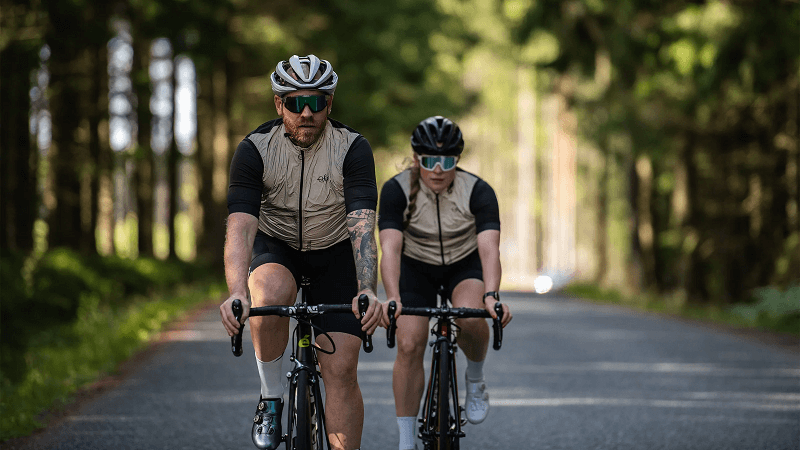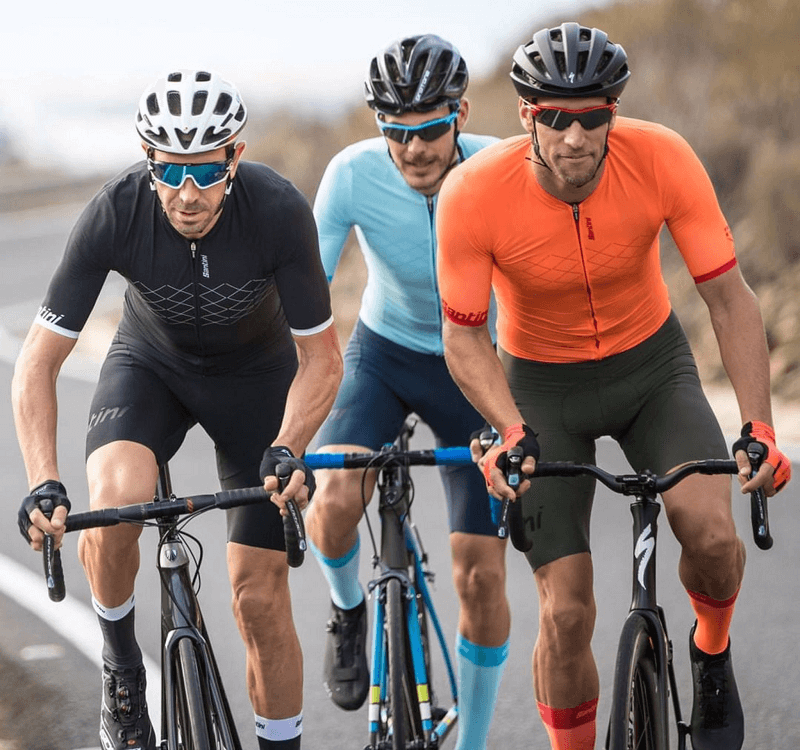As a cycling equipment shopper, choosing the correct gear for your consumers is critical to ensure a comfortable and enjoyable ride in all weather. When storing your inventory, there are several important elements to consider, ranging from insulating layers for chilly weather to breathable textiles for hotter climes. In this article, we’ll present a detailed approach on determining the best cycling apparel for your customers based on the weather conditions in your market.
Understanding Layering Principles
Layering is a crucial element in active outdoor attire. Cyclists who wear many lighter clothes rather than one hefty item can better control their body temperature and adapt to changing conditions during a ride. The base layer, which is immediately on the skin, should be a lightweight, moisture-wicking fabric such as merino wool or synthetic microfibers. This helps to move sweat away from the body, preventing chills.
The midlayer, worn over the foundation layer, provides additional insulation. Fleece, soft shell, and lightweight down or synthetic fill jackets are all suitable midlayers, with the fabric and level of warmth chosen dependent on the expected temperatures. For extremely cold temperatures, consider stocking thermal midlayer pieces with a better warmth-to-weight ratio.
Finally, the outer or shell layer shields the cyclist from wind and precipitation. Waterproof, breathable textiles such as Gore-Tex are great for keeping the biker dry while preventing overheating. Some cycling-specific shell jackets and leggings also have DWR (durable water repellent) coatings that provide light rain protection.
By advising customers on how to layer these various clothes, you can assist them in creating an adaptable cycling outfit that can be adjusted to suit a variety of weather conditions.

Choosing Suitable Fabrics
Beyond layering, the textiles used in cycling clothes play an important role in temperature regulation and comfort. Polyester, nylon, or merino wool are good choices for base layers because of their great moisture-wicking characteristics. These textiles wick moisture away from the skin, preventing the chilling effect of evaporation.
Insulating and weatherproofing properties should be considered while selecting midlayer and outer shell parts. Fleece, down, and synthetic fill textiles provide great warmth-to-weight ratios, but softshell and hardshell fabrics have variable degrees of wind and water resistance. Softshells are more breathable and stretchy, making them ideal for cool to cold weather, but hardshells prioritize waterproofing and are better suited to heavy rain or snowfall.
When picking exterior textiles, consider the garment’s waterproofing, breathability, and durability. Higher waterproof ratings (e.g., 20,000mm+) imply better rain protection, whereas higher breathability (e.g., 20,000g/m2/day+) helps prevent overheating. Fabrics with higher abrasion and tear resistance will also stand up to the rigors of cycling.
Accounting for wind and precipitation
Wind and precipitation provide distinct obstacles for bicycles, necessitating particular fabrics and designs. In chilly, windy weather, seek for clothes with windproof panels or linings to prevent cooling airflow. The most effective windbreakers are fabrics with a tighter weave or membrane construction.
Wet weather requires waterproof and water-resistant apparel. Features like sealed seams, waterproof zippers, and storm flaps keep the rider dry. Many cycling jackets and pants include ventilation mechanisms, such as pit zips or perforated panels, to minimize overheating.
Full rain/winter cycling suits provide the best protection against heavy rain or snowfall. These extremely insulated, weatherproof systems often contain a jacket, pants, shoe covers, and gloves to provide complete coverage from head to toe. While less adaptable than layered pieces, they offer superior weather protection.
Ensure a comfortable fit
Proper fit is essential for cycling apparel since ill-fitting garments can impede mobility, create chafing, and contribute to heat loss. When choosing items, pay particular attention to the cut and construction, looking for details like articulated elbows and knees, gusseted underarms, and elastic fabrics that allow for complete range of motion.
Many cycling-specific companies use body mapping technologies to deliberately place stretch panels, ventilation, and seamless construction in high-flex zones. This contributes to a form-fitting, ergonomic profile with less fabric bunching and unwanted airflow.
Also seek for adjustable features like as waist cinches, sleeve cuffs, and hem drawcords. These enable the customer to fine-tune the fit while preventing drafts. A snug but not restrictive fit is good for base and midlayers, while outer shells should allow for some extra area to accommodate the layering scheme underneath.

Addressing Gender-Specific Needs
When developing your cycling equipment collection, it’s critical to consider the unique demands of both male and female riders. Women’s cycling gear, for example, frequently have a more fitted, contoured fit to accommodate the feminine figure. Chamois pads in women’s shorts and bibs are also designed and positioned differently to provide maximum support and comfort in the saddle.
Furthermore, many women’s clothes include features like drop seats, adjustable bust panels, and seamless constructions to reduce friction and irritation. Paying attention to these gender-specific design features can help your customers find the optimal fit and function.
Conclusion
Choosing the appropriate cycling clothes for your customers necessitates a thorough understanding of layering principles, fabric technologies, and gender-specific design concerns. By providing a diverse assortment that handles a wide range of weather situations, you can assist your customers in remaining comfortable, dry, and focused on the journey, regardless of Mother Nature’s weather. Using this comprehensive guidance, you’ll be well on your way to creating a cycling apparel collection that caters to the demands of riders in any environment.











